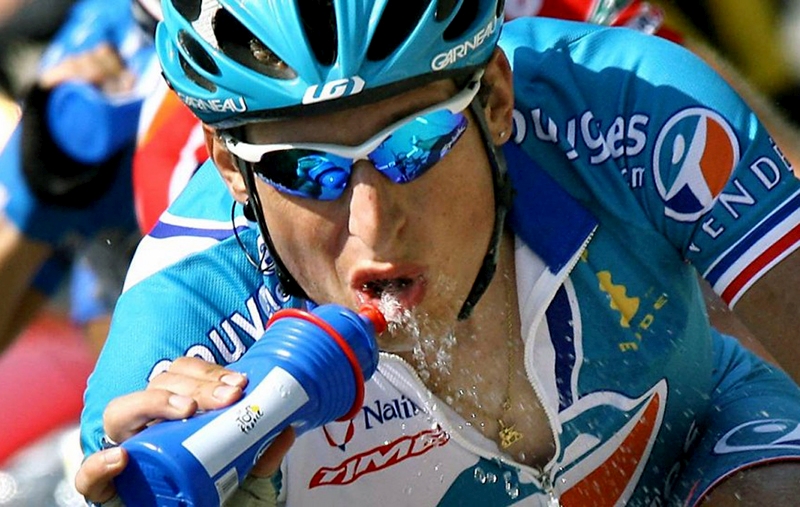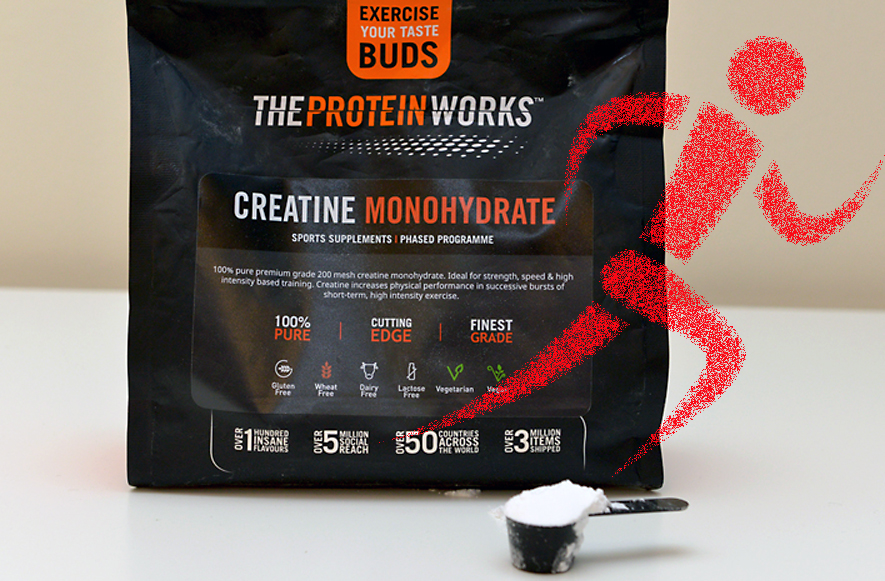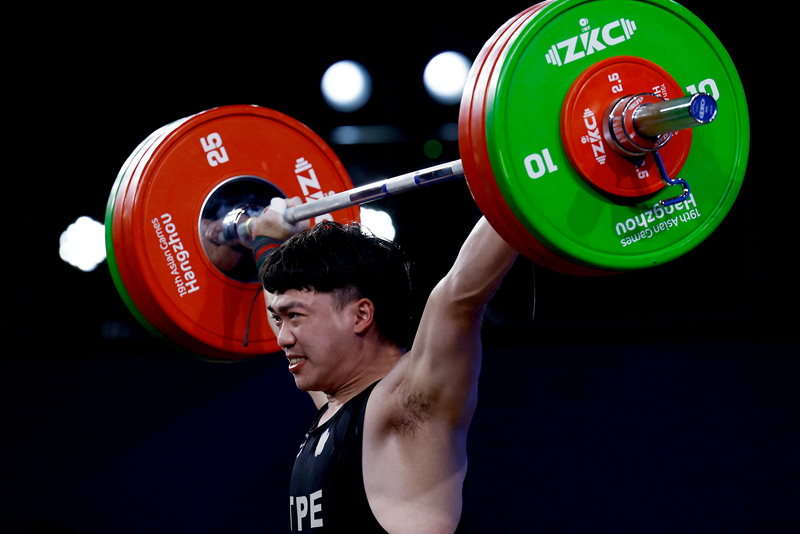Protein: are you getting enough? (you’re probably not!)

Andrew Hamilton looks at the very latest research on protein intake for athletes. Are you really consuming enough to optimize your performance?
Protein is not only an essential nutrient, it’s also the largest component in the body after water, typically representing about 15% of body weight. Most of this protein mass is found in skeletal muscle, which explains the importance of protein to athletes. An athlete has to move his or her body to perform, and this requires the generation of force within muscles to accelerate body mass. As a rule of thumb therefore, the greater the power to weight ratio an athlete has, the faster he or she can move, and (to a lesser extent) the longer he or she will be able to maintain any given speed of movement.Since all force and movement is generated by muscles, most power athletes benefit from maximizing muscle mass and strength, while minimizing the amount of superfluous body mass – i.e. body fat. And while out and out muscle strength is less important for endurance athletes, maintaining sufficient muscle mass is critically important, not least because high training volumes are known to increase the rate of protein oxidation from the amino acid pool (ie from the muscles), potentially leading to delayed recovery, a loss of muscle mass and consequent loss of power and increased injury risk.
Protein for athletes – how much is enough?
Given that athletic training is known to increase protein demands and potentially deplete muscle mass, many athletes, particularly bodybuilders and strength athletes, have advocated the use of high-protein diets to maintain a positive nitrogen balance, or at least prevent muscle breakdown and loss of muscle tissue. However, even today there remains much debate about how much protein athletes really need to optimize and maintain performance.Until relatively recently, it was believed that the protein requirements of athletes and sedentary people were similar, and that athletes only need consume the same amount of protein and same kinds of foods as needed by a sedentary adult. How much protein is this? Well, it depends where you live as to the precise protein intake recommendations.
In the UK, the ‘reference intake’ for protein is set at around 50g per day(1). For example, the UK NHS 'Eatwell' website cites that protein intake for an adult should be around 50g per day. For a 70kg athlete, that's just over 0.7g per kilo per day (0.7g/kg/day). In the US, the recommended dietary allowance for protein in the average population is 0.8g/kg/day(2).
In the European Union, the EFSA has set a recommendation for daily protein intake of 0.83 g protein/kg body weight per day, which equates to around 10-12% of total energy intake EFSA Supp. Pub. 2015, 12, 871E. However, these recommendations are different within member countries. For example, the Spanish recommendation is 0.9 to 1.2g/kg/day and the Finnish recommendation is 1.1-1.3g of protein per kilo per day(3,4).
Moreover, the assumption has also been that if athletes do need more protein, any extra protein intake needed will almost certainly arise from the fact that athletes (who train regularly) eat more food and calories each day than their sedentary peers. Assuming some of this food contains protein the argument goes, that should also boost protein intake. An example of this can be seen in the EFSA guidelines on protein intake, which do not make any specific recommendations beyond a well-balanced diet for athletes; they simply propose that if the protein contribution to total energy intake is kept at about 10-12% of calories consumed, a higher intake of energy will boost protein intake also.
A shift in protein thinking
Although many official bodies still recommend that protein intakes of around 0.7-1.1 grams per kilo per day are more than adequate, a growing body of research over the past 25 years or so has indicated that athletes engaged in intense training DO actually need significantly more protein than their sedentary peers. Some of the early research suggesting athletes may benefit from increased protein intake (based on the standard recommendation of 0.8g/kg/day) suggested that athletes needed to ingest about 1.5 to 2 times this amount (1.2-1.6g/kg/day) in order to maintain a positive protein balance(5-8).More recently, a number of bodies and organisations that advise on sports nutrition for athletes have also revised upwards their protein recommendations for athletes in training – albeit with a range of recommendations. These include the American Dietetic Association, Dieticians of Canada, and the American College of Sports Medicine, who now recommend a protein intake of 1.2-1.7g/kg/day(9). Moreover, since these official recommendations have been made, research has continued to suggest that athletes may benefit from even higher levels of protein intake. For example, sophisticated nitrogen balance studies have suggested that the optimum protein intake range for strength and power athletes is in the region of 1.5-2.0g/kg/day(10), while an intake of 1.83g of protein per kilo per day has been recommended for endurance athletes in a study employing another sophisticated and accurate technique known as ‘indicator amino acid oxidation method’(11).
Protein and immunity
Most people tend to think of protein as an essential nutrient for promoting muscle growth and recovery, and this is indeed the case. A number of studies have demonstrated beyond doubt that ensure plenty of the right kind of protein at the right time enhances recovery from exercise, gains in muscle mass and strength and even performance in a subsequent bout of exercise – for an in depth discussion of this topic, read this Sports Performance Bulletin article. However, some research also suggests that ensuring optimum protein intake can help maintain immunity and prevent illness and infection, especially during periods of heavy training.In a comprehensive study on this topic, Scottish researchers looked to see whether a high-protein diet could boost the markers of immunity in a group of eight well-trained cyclists undergoing heavy training compared to a lower (and more normal) intake(12). They also looked to see whether any uptick in markers of immunity was also reflected in a reduced incidence of upper respiratory tract infections (URTIs – ie coughs, colds, sore throats, flu, sinusitis etc). To do this, the cyclists undertook two separate weeks of high-intensity training. In one of these periods, they consumed a high-protein diet containing 3 grams of protein per kilo of their bodyweight. In the other, they consumed exactly the same number of total calories per day but this time the protein intake was a more modest 1.5g per kilo of bodyweight per day (ie less protein, but topped up with more carbohydrate to ensure the same overall energy intake).
The first finding was that when the cyclists were on the lower-protein diet, upping the training load produced a significant drop in the immune function. In particular, the activity of cells whose job it is to ‘survey’ the body for viruses and then help trigger an immune response were much less active during the high-intensity training week. When the cyclists were on the high-protein diet however, their immune function did not suffer in the high-intensity week and remained just as potent as when they were training at normal intensity. More tellingly, when the cyclists consumed a high-protein diet and trained hard, they reported significantly fewer URTI symptoms compared to training hard on the lower-protein diet!
What’s interesting about this research is that the lower intake of protein used in this study (1.5g/kg/day) is firmly in the range currently recommended for endurance athletes such as cyclists, runners and triathletes by a number of sports bodies. Yet this study suggests that while 1.5g per day might be okay in terms of performance, it might not be nearly enough to keep the immune system in tip-top condition, especially during harder periods of training.
The very latest thinking
Although the optimum protein intake for athletes might seem like ‘settled science’, recent research continues to throw up new findings. For example, in a comprehensive review study (a study that pools findings from a number of previous studies on the same topic) on this topic, researchers reviewed all of the evidence to date on optimum protein intake amounts for athletes seeking maximum performance(13). They concluded the following:- Regarding the 1.5-2.0g/kg/day range for athletes, strength and power athletes are recommended to consume protein intakes near to the top of this range; while endurance athletes might need slightly lower amounts.
- Relating to point 1) however, temporary ingestion of higher quantities during intense periods of training may provide additional benefit.
- Because muscle protein synthesis is upregulated for 24 hours following exercise and the body is primed to absorb more protein during this period, this is an ideal time to optimize protein intake in order to maintain muscle mass after endurance exercise (especially as prolonged endurance exercise may induce a catabolic state and muscle breakdown).
- Athletes should ingest 0.25-0.3g/kg (around 20-25g in total) of a quality protein source such as whey in the immediate period after exercise, and certainly no later than two hours post exercise. This practice will maximally stimulate signalling proteins known to stimulate muscle growth and recovery.
The results showed that in order to maximize muscle protein synthesis in the resistance-trained athletes (who were already accustomed to a high habitual protein intake), at least 2.0g/kg/day of protein was needed. Given the protein provided to the athletes was perfectly balance in terms of amino acid ratio, this suggests that the optimum intake following whole body resistance training is likely to be significantly higher than 2.0g per day when eating a mix of protein foods.
Swimming and protein
Another recent study on optimum protein intake in athletes has investigated swimmers during an intense preparation phase during which the subjects undertook dry-land and resistance training in addition to their swim training(15). During this 5-day period of training, the swimmers completed six swim sessions of around 75 minutes, five dry-land training sessions and one resistance session using weights – a fairly heavy schedule! The swimmers’ nutrient intakes were assessed using dietary records and nitrogen balance (protein intake minus protein losses) was calculated from the daily protein intake and urinary nitrogen excretion. The intake amounts of amino acids and protein at seven eating also occasions were determined.Figure 1: Relationship between nitrogen balance and protein intake

What the researchers found was that in order to be confident of achieving a positive nitrogen balance (ie protein sufficient), the swimmers needed to be consuming at least 1.92g/kg/day of protein – ie right at the very top of the range. And to achieve a positive protein balance (ie gain muscle mass) this amount would likely need to be in the 2.0-2.5g/kg/day range (see figure 1). A further analysis however showed that while the swimmers consumed reasonably amounts of protein, they failed to meet the guidelines regarding post-exercise protein consumption (ingesting around 20-25g in total of a quality protein source such as whey in the immediate period after each bout of exercise). Had they done so, their protein intakes would have needed to be even higher – somewhere in the region of 3.0g/kg/day.
Summary and recommendations for athletes
Once upon a time, a protein intake of just 0.8g/kg/day was considered as an adequate amount for athletes. Over the years however, our understanding of protein nutrition has evolved considerably. The current official recommendation of 1.5-2.0g/kg/day should now be considered as a minimum. And strength, power and sprint athletes should be consuming intakes at the top of the range. The most recent research however suggests that even these amounts may not be optimum; on the latest evidence to date, athletes who are undergoing periods of heavy training should consider the 2.0g/kg/day benchmark as a minimum amount – regardless of whether endurance or strength training. Indeed, if a period of heavy training includes heavy strength or resistance training, then protein intake in the region of 2.5g/kg/day may be more appropriate. The same is true in the 24-hour period following an unusually heavy training session. Finally, as we enter the winter season here in the northern hemisphere, athletes who are prone to coughs, colds, sore throats and other winter ailments may wish to maintain protein intakes nearer to 3g/kg/day in order to maximize their immunity.Calculation made easy
To calculate how many grams of protein you need to consume to achieve a given g/kg/day, simply multiply your bodyweight by that figure. So, for an 80kg athlete to achieve 2.2g/kg/day, he/she would need to consume 80 x 2.2g per day = 176g. To find out exactly how much protein is present in the foods you consume, the use of an online calculator is handy. A good example is the ‘Food Calorie Calculator, which is powered by the USDA National Nutrient Database. Click on the image below to visit the site (simply enter your food and drink choices under "Keywords").
References
- www.nhs.uk/live-well/eat-well/what-are-reference-intakes-on-food-labels
- PLoS ONE 2016, 11, e0157406
- Libro Blanco De La Nutrición En España; Fundación Española de la Nutrición (FEN): Madrid, Spain, 2013; pp. 113–124
- Finnish National Nutrition Council. Terveyttä Ruoasta. Suomalaiset Ravitsemussuositukset; Finnish National Nutrition Council: Tampere, Finland, 2014
- J Appl Physiol 1992;73(2):767-75
- J Appl Physiol 1988;64(1):187-93
- J Appl Physiol 1992;73(5):1986-95
- Curr Opin Clin Nutr Metab Care 1999;2(6):533-7
- J. Am. Diet. Assoc. 2009, 109, 509–527
- Proc. Nutr. Soc. 2011, 70, 205–214
- PLoS ONE 2016, 11, e0157406
- Brain Behav Immun. 2014 Jul;39:211-219
- Nutrients 2019, 11, 1289
- J Nutr. 2019 Oct 16. pii: nxz249
- Nutrients 2018, 10, 1809
Newsletter Sign Up
Testimonials
Dr. Alexandra Fandetti-Robin, Back & Body Chiropractic
Elspeth Cowell MSCh DpodM SRCh HCPC reg
William Hunter, Nuffield Health
Newsletter Sign Up
Coaches Testimonials
Dr. Alexandra Fandetti-Robin, Back & Body Chiropractic
Elspeth Cowell MSCh DpodM SRCh HCPC reg
William Hunter, Nuffield Health
Keep up with latest sports science research and apply it to maximize performance
Today you have the chance to join a group of athletes, and sports coaches/trainers who all have something special in common...
They use the latest research to improve performance for themselves and their clients - both athletes and sports teams - with help from global specialists in the fields of sports science, sports medicine and sports psychology.
They do this by reading Sports Performance Bulletin, an easy-to-digest but serious-minded journal dedicated to high performance sports. SPB offers a wealth of information and insight into the latest research, in an easily-accessible and understood format, along with a wealth of practical recommendations.
*includes 3 coaching manuals
Get Inspired
All the latest techniques and approaches
Sports Performance Bulletin helps dedicated endurance athletes improve their performance. Sense-checking the latest sports science research, and sourcing evidence and case studies to support findings, Sports Performance Bulletin turns proven insights into easily digestible practical advice. Supporting athletes, coaches and professionals who wish to ensure their guidance and programmes are kept right up to date and based on credible science.












